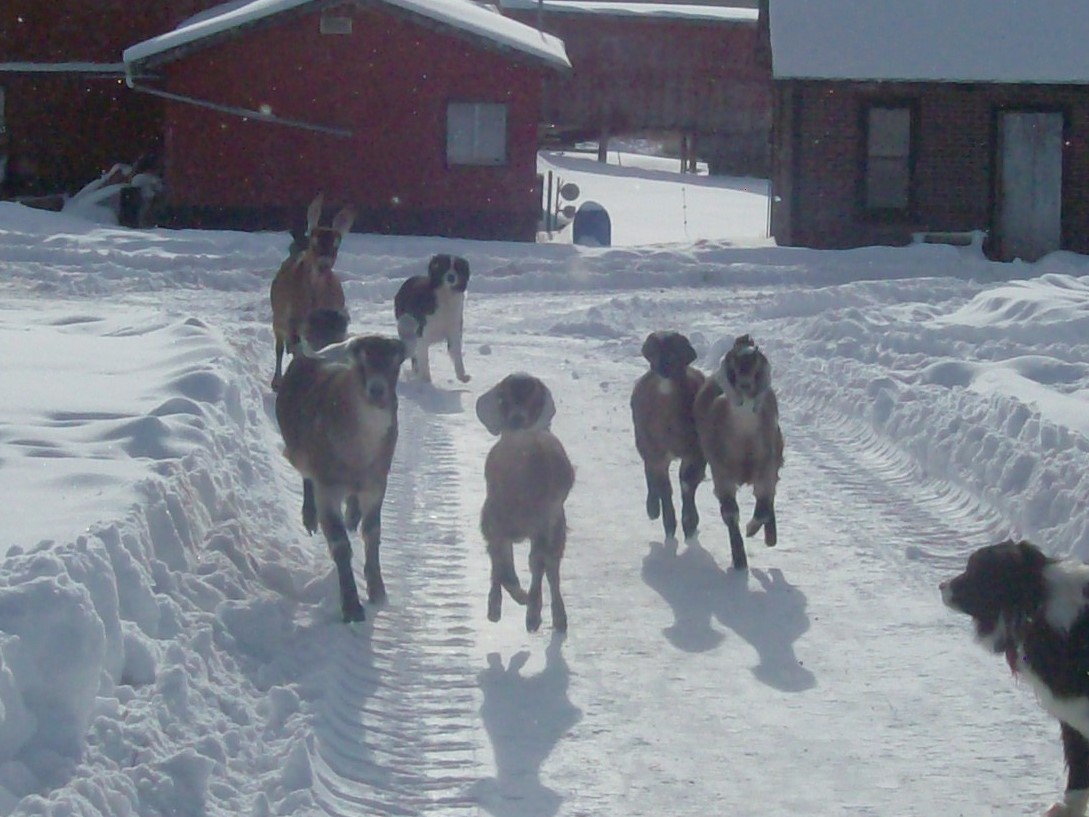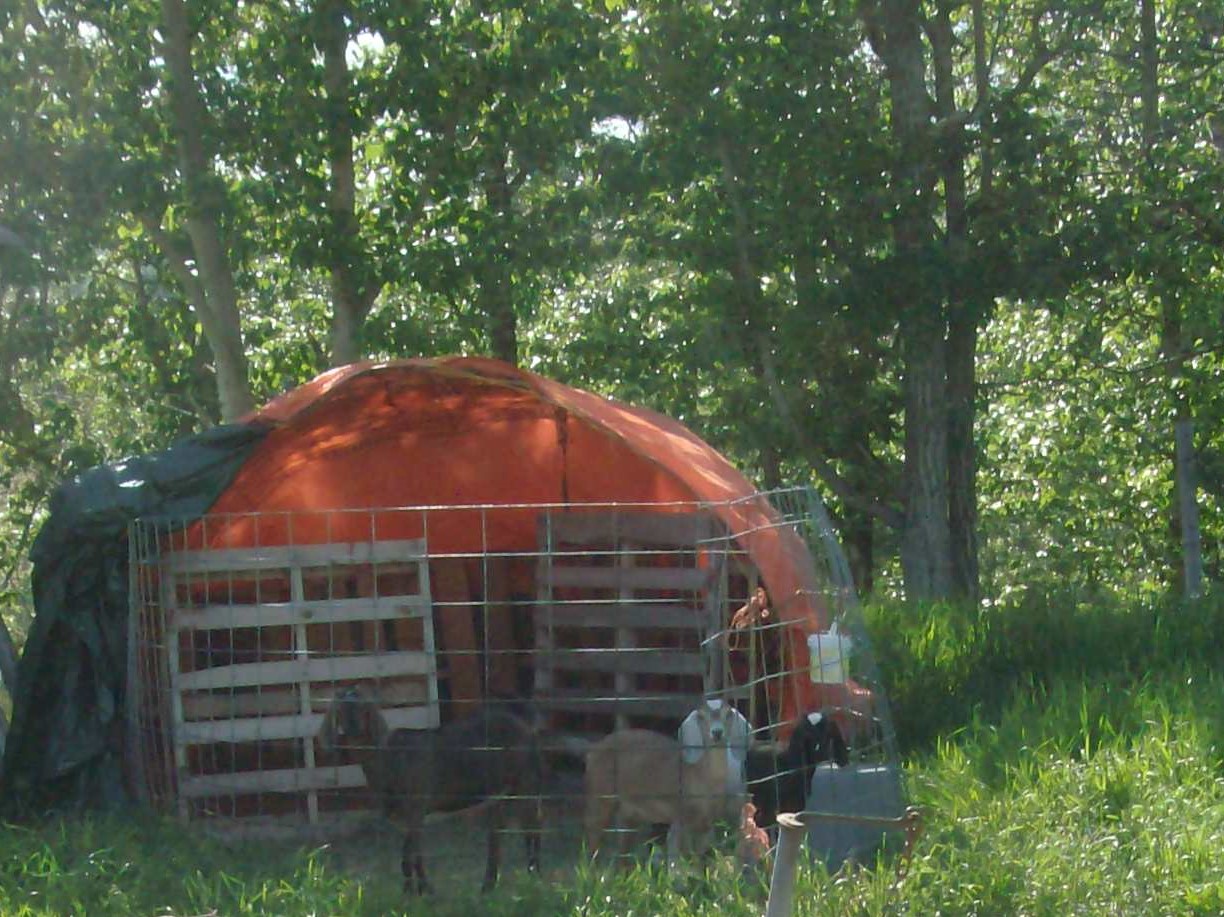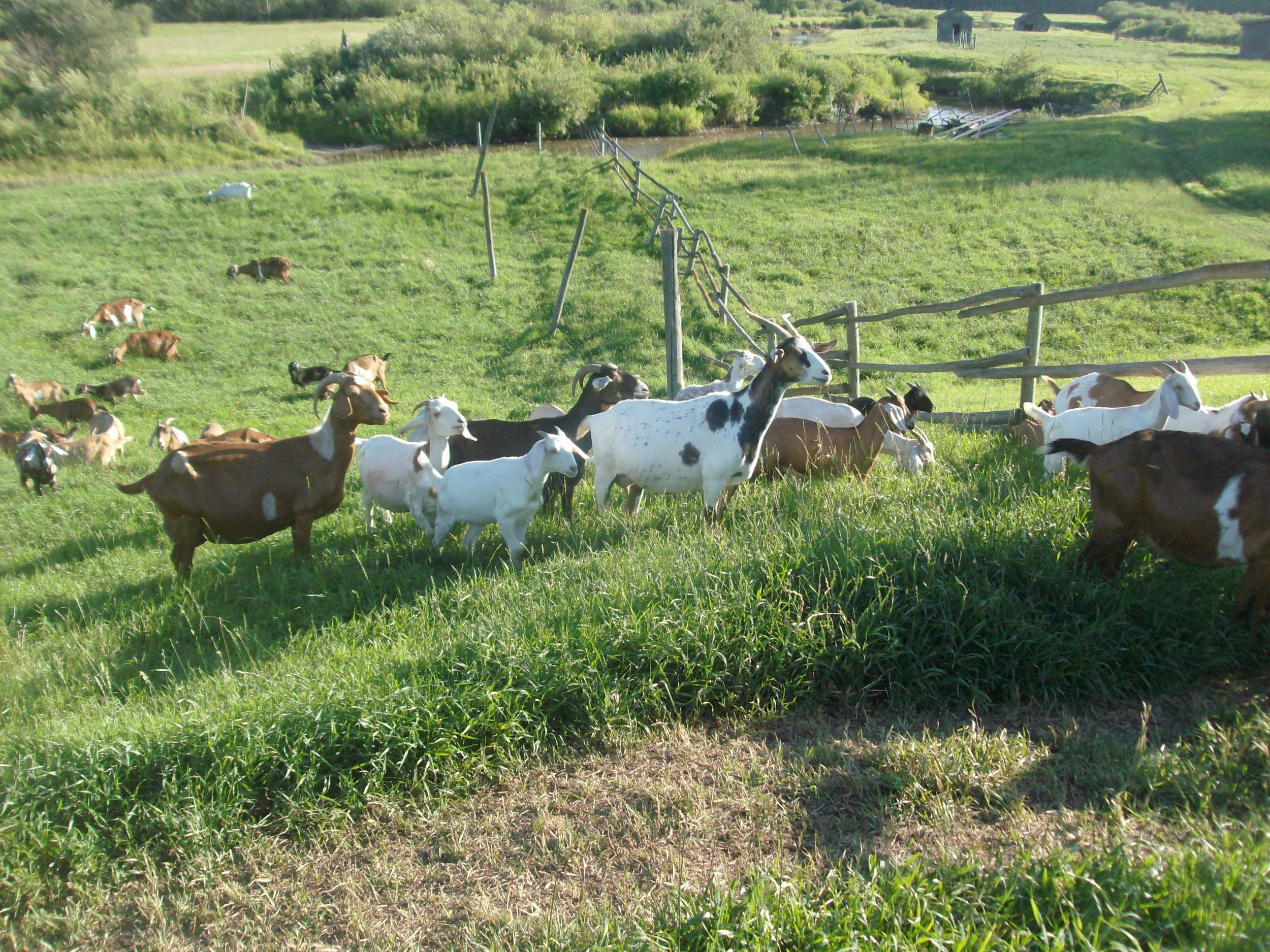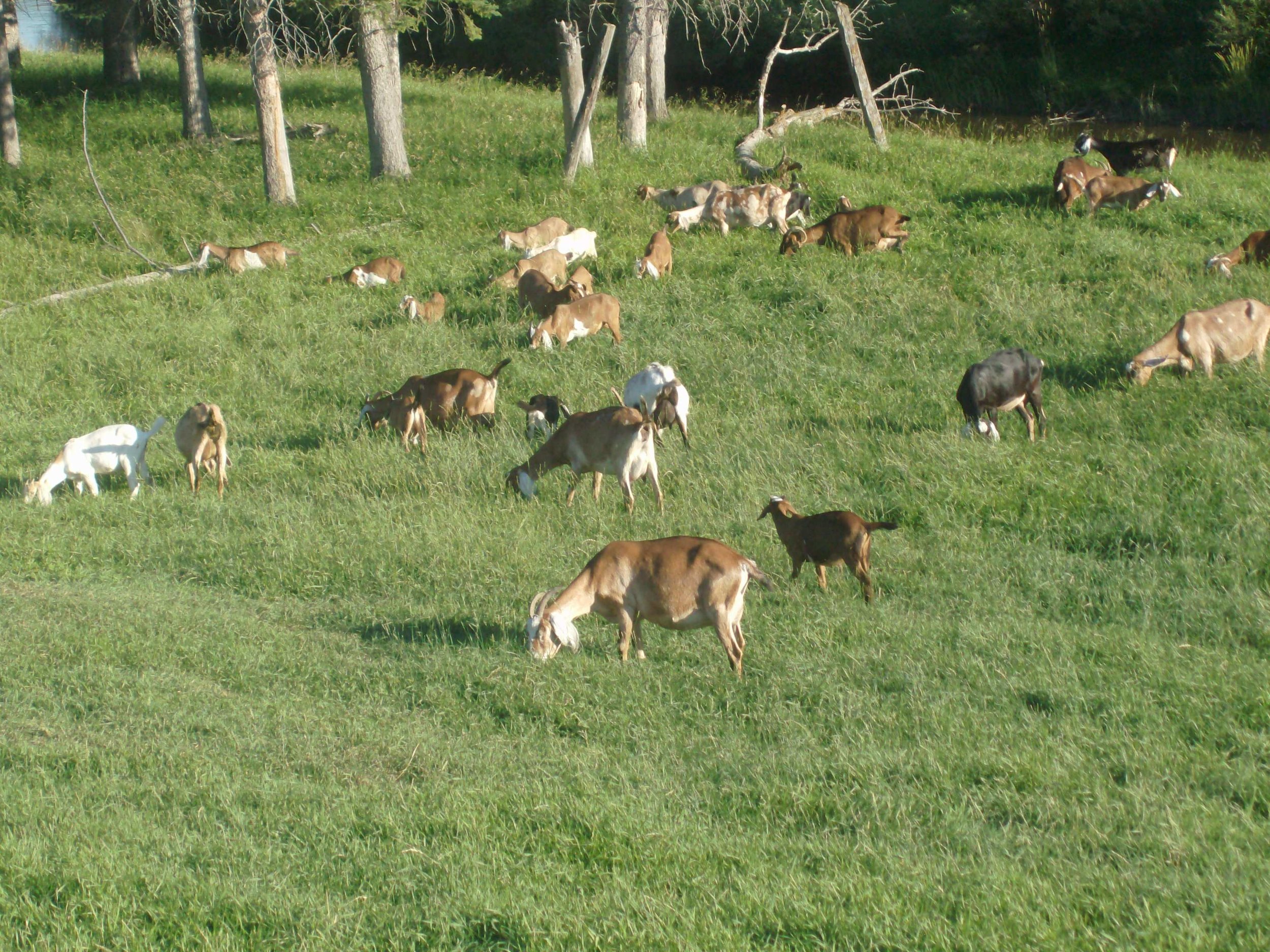BRAMBLES NUBIANS
In 2001, a few cross bred dairy goats were added to the farm. One of whom I named Bramble - the Brambles herd began. Over the years, with the addition of purebred Nubian bucks for breed improvement and conformity on the original cross bred does, I became interested in having purebred females too. My foundation purebred does were all from the Garden Gate herd - since then, blended with what are unique Garden Gate lines, I have also added Pella’s Triple C, Saada and Tideland genetics to the herd.
I strive to breed for Nubians, that meet the traditional definition of the Nubian - being strong boned, large and yet graceful. To assist with herd goals, I have taken part in Canadian Goat Society classification - and have used the learning experience to select for specific improvements across the herd.
All kids are raised on a CAE preventative program - using colostrum replacer and Grober Kidgro A+ milk replacer. Any missed births or kids that manage to find colostrum from dam’s are not entered into the preventative program (even with tested negative does). CAE testing takes place twice per year. Generally retained kids are tested at anywhere from 3-6 months of age and again around 12 months of age. Although there is no exposure to CAE, I prefer to have two tests as juniors, then go to annual testing for adults thereafter.
Potential purchasers are welcome to test for CAE, CL and Johnes at the buyer’s expense.
G6S testing is completed where applicable. Testing is complimentary with kids where a test is required.
The herd is fed on a ration of alfalfa hay, coarse native hay, dairy grain ration, minerals and salt. In the summer months the older does are out on pasture. Kids are raised in a dry lot system. Dry yearlings are mainly raised on dry lot, but have access to pasture for a few hours in the day.
FREQUENTLY ASKED QUESTIONS
Do you test for Johne’s and CL? No, there has been no whole herd test for either Johnes or CL. Without whole herd testing I consider the herd to be “not tested”. In the future when the herd becomes a more manageable size to feasibly test, I plan to for Johne’s.
In the meantime, for Johne’s I am essentially following the prevention plan suggested in the Beef Cattle Research Council Guidelines: beefresearch.ca/research-topic.cfm/johnes-disease-51?language=&print#impact.
*Dam raised animals are not sold as breeding stock.
*Kids are raised separately to the adults. As a result of running a strict CAE preventative program - no kids return to the adult herd, they are kept in the initial groups that they were raised in - in separate penning. Kids are not fed pasteurized milk or heat treated colostrum. If I miss a birth the kids (even with a booking on them) are not entered into any form of preventative program.
*There have been no culls in the cattle herd due to Johne’s. In over 20 years, the herd has not had any cows symptomatic of Johne’s. Monitoring is a more practical/economical approach in a commercial cattle herd, rather than testing. The cattle herd has been closed for over 20 years with the exception of bulls - it is not uncommon and in fact the norm for cows to stay on the farm, still raising calves well into their teens. Currently our oldest cow with a calf at foot is 17. However, please note, this is not a claim that there is no Johne’s here - it is in keeping with being vigilant for Johne’s - as is laid out in the Beef Research Council guidelines.
*We only purchase bulls from known sources (it is not uncommon for our bulls to still be breeding at 9 years old). Similarly bucks are only brought in from specific herds. The herd is otherwise closed. The last doe I purchased had been tested for Johne’s - along with the rest of her herd.
*Hay for the goat herd is and always has been purchased from a farm with no ruminants. Non-ruminant forms of fertilizer are used on the fields. On the farm, coarse hay comes from crown land. No cattle graze on the crown land, nor is the field fertilized with manure. The land has remained untouched for over 20 years.
*Until such time, as I complete more than one whole herd test for Johne’s - all breeding stock prior to being offered for sale over a year of age will be tested for Johne’s (PCR not ELISA). As the kids remain in their groups buyer’s are welcome to also pay for pool testing within the group.
Do you vaccinate? Yes the herd is vaccinated with Tasvax 8. I did use Glanvac 6 for one year - but to the detriment of the herd. Glanvac 6 does not cover a form of enterotoxemia that is common in Canada. Therefore, I switched straight back to Tasvax 8 and vaccinate every 6 months.
Do you disbud? Yes, purebred kids are disbudded. They are given metacam approximately 20 minutes before disbudding. Are there goats with horns in the herd? Sure there are…One reason is it’s taken me an awfully long time to learn to disbud, on my own - like so many others find, it’s a task that takes a lot of nerve in the first place. Secondly, there are my original does on the farm - these does do have horns - they are not sold for breeding stock. Meat kids also keep their horns, as they are seen as less “tainted” by some buyers.
Do you dam raise? Yes and no. Purebred kids for breeding stock are hand raised. Meat kids are dam raised - it’s a simple fact of being more economical that way.
FREQUENTLY ASKED QUESTIONS DAIRY COW
Do you test for Johnes? Our mature stock are tested for Johnes using the PCR method of testing. Stock under 2 years is not tested, but calves come from herds that do test for Johnes.
Do you vaccinate? Yes, dairy cows are vaccinated with an 8-way vaccine
Do you disbud? All cattle offered for sale will be disbudded.
Do you sell bulls? We do not sell either Jersey or Kerry bulls at this time. We will not be selling Jersey bulls.
Are you dairy cattle registered? Yes Registration will be completed with either Jersey Canada or through the Canadian Livestock Records Corporation.
Pictured L-R: “Late for chores!”, Shelter for kids on a CAE preventative program in summer, commercial herd coming back from grazing, commercial herd grazing.




